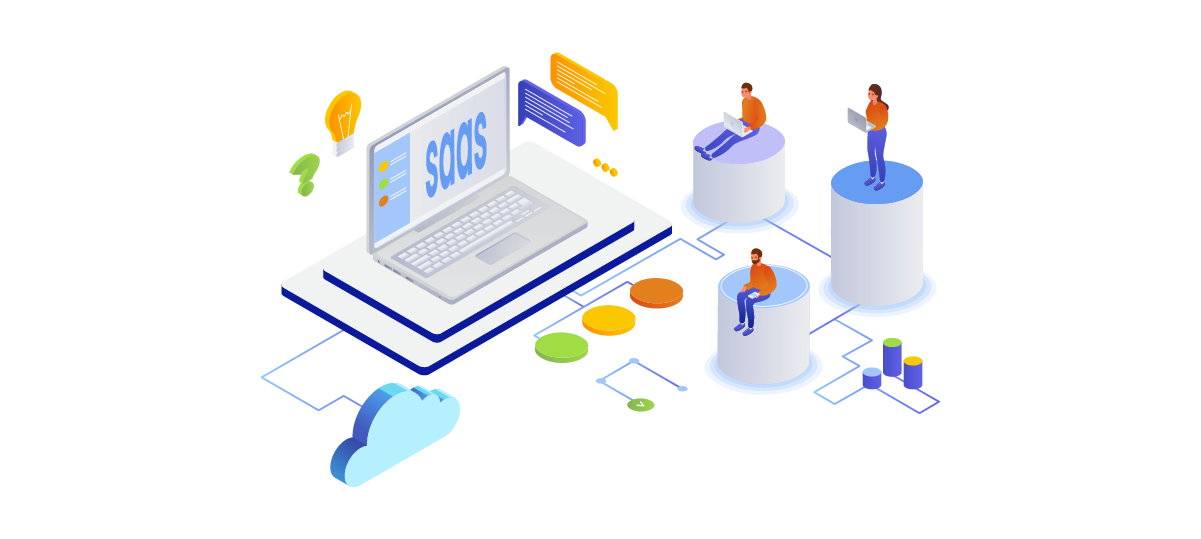The focus of the sales and marketing teams and the source of top-line revenue growth may be new customer logos. But in recent years, renewals have become a significant growth engine for SaaS businesses.
Table of Contents
How do you keep SaaS Customers Engaged?

It is easier to get consumers started using your SaaS platform than it is to make sure they get value out of it. Customers’ success would aid SaaS companies in generating new sources of income and improving their bottom line. According to a recent McKinsey study, even at startups, new revenue growth could be driven by between a third and a half of existing customers. Customer acquisition expenses are reportedly five times higher than customer retention expenses.
It takes work to convert clients into raving fans who will upgrade to new services and renew their contracts on your platform. To ensure that they are not only satisfied but also turn out to be successful, a concerted effort is required. They can then use your platform to address more issues, eventually turning into your brand’s champions.
Nowadays, many businesses strive for a Net Retention Rate (NRR) of 100 percent in order to safeguard and improve their bottom line earnings. Existing consumers are more inclined to make more purchases from you and test out new products that are potential new clients. These factors have made customer success more prominent in the contemporary SaaS economy.
Here are Some Crucial Measures to Help your Clients succeed:
Developing momentum
The simple part is getting users started on your platform. The difficult aspect is making sure they derive value from your platform. Similar to other business endeavors, understanding whether customers see the value and successfully use your product depends on having the correct data and the analytical skills to interpret it. You must first comprehend how your clients utilize your product, as well as the features and functionalities that they employ most frequently and the commercial operations that they use it for. Understanding your clients’ emotions depends on this data.
Do your consumers ever have problems utilizing your product in the manner they intended? Such issues frequently occur in the early phases of customer adoption. However, it is generally simpler to avoid them in the future. In the end, what matters is how you bounce back and learn. Additionally, having information on how
customers using your platform enables you to identify this and continuously assess how customer success is being achieved on it. It’s crucial to give your customers a high-touch experience, especially in the beginning. It’s also essential to designate a committed customer success manager who takes an organized, smooth, and unique approach to every client.
Being Reliable
Gaining your customers’ trust, walking them through the implementation process, providing them with high-touch personalized service, watching how they use your platform, comprehending the difficulties they encounter, and assisting them in realizing their progress will help you keep them, increase their platform usage, and turn them into your brand ambassadors.
Early Engagement
Beginning at transaction completion or sooner, consumers’ success is ensured. The customer signs the contract when the deal is closed by your sales team, after which the customer success team takes over. The next phase is to develop an implementation roadmap while earning the customer’s trust. Onboarding and training, user acceptability testing (UAT), project planning, and a solution description showing a successful customer implementation can all be included.
Constant Communication
It’s crucial to do quarterly business reviews. You need to know if your software satisfies your clients’ needs and assist them in creating a personalized product roadmap for future adoption. Customers should be aware of future upgrades in your product roadmap so they can predict when they will get a feature that will change the way they use your product.
Data on customer usage does not fully describe their success. The following questions can help you better understand how your platform functions for your customers:
- How much time do you save using our platform versus the one you were using before?
- Can you employ fewer employees than before?
- After using ours, have you ceased using any other software tools?
- Are you able to identify problems and their underlying causes more quickly than before?
You must realize, too, that clients won’t always have information on how their old systems operated. The aforementioned information may therefore be anecdotal in some cases. Nevertheless, by posing these questions, you may be able to make your clients more aware of the benefits of your platform and the objectives they hope to achieve through its use.
From the standpoint of the customer, switching SaaS products is a rather simple process. Customers that don’t utilize a SaaS platform’s features take their issues elsewhere. The most crucial ways to show that you care and are invested in their success are to listen to your clients’ needs and problems.
Conclusion
By taking these actions, you can demonstrate to your clients that your firm is a dependable partner that is sensitive to their needs and helps them discover answers to their business difficulties. Your customer success department will become a profit center as a result of your customers’ success in helping you develop new revenue streams and increase your bottom line. To get to know more about it, connect with SaaSworthy.





